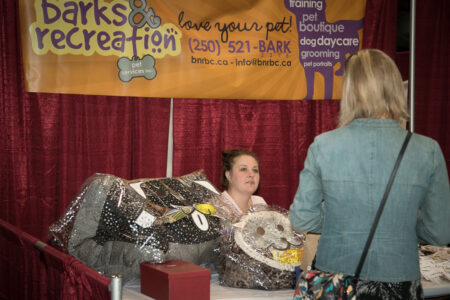Rossland REAL Food: Extending the Season in Our Mountain Kingdom
The Rossland REAL Food blog is a collaborative space for people to provide their thoughts and expertise on gardening, sustainable living, food preserving, recipes and more. Rossland REAL Food will aim to have a new entry every two weeks on a new and exciting topic that addresses these themes.
Extending the Season in Our Mountain Kingdom
Rosslanders talk about the weather a lot, especially when it’s irregular, like this spring. Expert food growers and gardeners in town have confirmed local observations and have concluded that we are, in fact, three weeks behind schedule for the growing season.
What is a Rosslander to do? How can we grow food in this climate?
Extending the season in the spring and the fall is the key when the growing season is cool, short and wet. This article provides some tips and tricks to extend the season so that you can have a successful garden in Rossland. The tips below are not exhaustive, but touch on the experience and knowledge of Rosslanders who harvest plentiful crops year after year.
Understanding our climate: day time highs versus night time lows
In Rossland, our daytime temperatures are not bad for growing, especially in July and August. What really shortens our growing season are the nighttime lows. Compared to Trail, where you can wear short sleeves until 3am, the mountain environment cools down quickly when the sun goes down. This also means that the soil cools down and this slows plant growth. In the morning, the sun has to start from scratch to warm that soil up again so that the plants will grow. Finding methods to keep the heat in the soil overnight will greatly improve growing conditions for your plants.
Keep this in mind as you read the following sections, it will help you understand the principles behind extending the growing season.
Understanding Aspect
Sun! If you are planning your garden, plan it around the sun so that your soil will be the warmest it can be. The best possible aspect you can have in Rossland for growing food is south or south east. Even better is a garden that slopes slightly south. Some varieties of food like the shade, but for simplicity, I recommend 100% full sun.
Rosslanders will also tell you that there are frost bands that move through town. They sweep down from the mountains and move that cool air over unsuspecting veggie gardens. If you have the option to build your garden in the shelter of a building, hedge, fence or other barrier, it will slow the movement of cool air over your garden and extend your growing season. Using heat absorbing materials in your garden such as rocks will also help increase the temperature of the soil.
Planting Hardy Crops EARLY
Plant cold hardy plants that grow well in cool soil — your peas, kale, spinach, mesclun mixes, lettuce, radishes, and onions — by May 1 or earlier. This will give your cold hardy plants a head start and you will be eating from the garden by the end of June.
Tools: Season Extension Devices
1. Reemay
2. Hoop Houses
3. Cold Frames
1. Reemay (also called Row Covers or Cloches)
This season extender requires no infrastructure, is temporary, serves many purposes and is affordable. Weighing only 0.6 ounce per square yard, this polyester fabric allows 75% light transmission and provides frost protection down to minus three degrees Celsius. Most importantly, reemay locks the soil temperatures in during the night by slowing down evaporation. I guarantee that reemay will increase your growing season by at least one to two months. I held an experiment in my garden this year where I planted squash, zucchinis and cucumbers on May 10th under reemay (usually I would never plant these crops before the May long weekend or later). My experiment was success and my plants are healthy, large and have a two week head start.
Ideal crops: All crops that are under approximately one foot in height.
Other advantages: Soil moisture retention, rain penetration, frost protection, and pest and pet deterrent.
How to use it: Simply lay it over your crops and secure the corners with rocks or soil. The fabric is very light so the tiny seedlings will push the fabric up when they come up. You can remove the reemay during the very hot summer months. Reemay also works well in combination with hoop houses and cold frames.during the coldest months.
Where to buy it: Columbia Gardens Greenhouse, Westcoast seeds, Lee Valley (and most other gardening supply stores)
2. Hoop Houses
A hoop house is a greenhouse with a plastic roof wrapped over flexible piping. They are easy to erect, affordable and can be moved around the garden. A hoop house will definitely extend your season by 2 months. The one thing that you must remember with a hoop house is that it gets very hot on a sunny day and good ventilation is necessary as you can easily fry your crops before they hit the frying pan. Close the ventilation at night to keep the soil warm.
Ideal crops: An excellent choice for tomatoes, peppers, eggplant, and basil (because of plant height and irrigation control).
Additional advantages: Irrigation and moisture control (from rain), a warmer environment, suitable for taller crops, and hardy crops will overwinter in a hoop house.
How to build it: Simple instructions to build one can be found online, and you can also visit the Rossland Community Garden to see how. Tip: A more economical option than using PVC piping is to use the cheaper alternative of irrigation piping. Ask your friends if they have any left over vapour barrier from their last renovation as it’s a good heavy duty plastic for the hoop house (but any transparent plastic will do).
3. Cold Frames
A cold frame is an enclosure with a transparent roof that admits sunlight, built low to the ground to function as another type of miniature greenhouse . Cold frames are very handy if you have raised beds with wooden edges — you can simply place a pane of glass over the frame of the bed. They are also a very practical device for hardening plants off in the spring time.
Cold frames are a personal favourite of mine as they are very affordable to build and come in any shape and size you can imagine. The disadvantage of a cold frame is that it functions well for plants that are short, but once the plants get taller, they rarely fit. They are a great device for early season to warm up the soil.
Ideal crops: great for starting all crops from seed, young tomato, pepper and herb plants
Additional advantages: Prevents pests and pets from getting in your soil, great for hardening off seedlings, good for soil moisture retention
How to build it: There are so many ways to build a cold frame. Get online and read some books and choose the right one for you. The Trail re-use centre has hundreds of free panes of glass. Wood slabs can be purchase for next to nothing from Bruce Robinson at the portable mill on the Old Cascade highway.
Conclusion
There are examples of these season extension devices all over Rossland. Joining an edible garden tour is an excellent way to get a full picture of what extending the season can do to make your garden produce excellent and abundant food crops. The next edible garden tour is on July 30, 2011. Meet at the community garden at 9am. If you can’t make the garden tour, contact a member of Rossland REAL Food and they can send you in the right direction.
Recommended reading: Elliot Coleman is the author of many book on extending the season and four season farming. I recommend “Four Season Harvest: How to Harvest Fresh Organic Vegetables from Your Home Gardens All Year Long”.






















